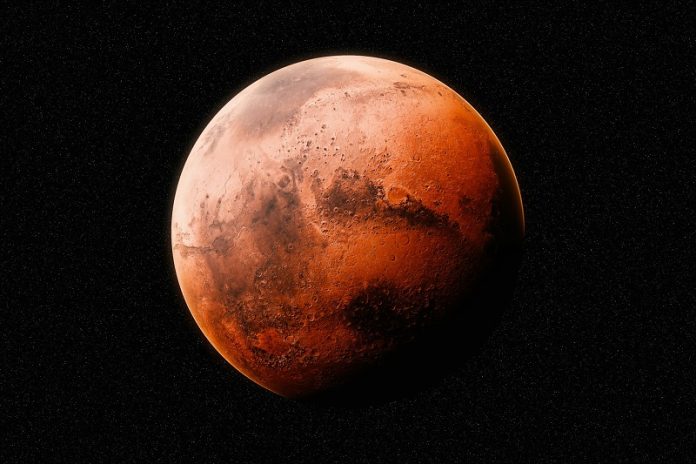
Before astronauts set foot on Mars, they’ll need to find the right place to land—and survive.
New research led by planetary geologist Erica Luzzi from the University of Mississippi may have just brought us one step closer.
Her team found evidence of water ice just below the surface of Mars, offering a possible lifeline for future explorers.
The discovery, published in the Journal of Geophysical Research: Planets, highlights a region on Mars called Amazonis Planitia.
This area, located in the planet’s mid-latitudes, has long been considered a potential landing site for human missions.
Luzzi and her team used high-resolution images taken from Mars orbit to study this region in detail. They found clues like small craters, polygon-shaped ground patterns, and softened edges—features that usually point to ice just under the surface.
What makes this discovery exciting is how close the ice appears to be—less than a meter deep. That’s shallow enough for astronauts to access it with basic tools or a robotic assistant. On a planet where bringing supplies from Earth is costly and time-consuming, being able to use what’s already there is critical.
This practice is known as in situ resource utilization.
“If we’re going to send people to Mars, we need water—not just for drinking but also for making fuel and oxygen,” said Luzzi, who completed the research during her time at NASA’s Ames Research Center. “Finding ice near the surface is a huge advantage.”
Mid-latitude regions like Amazonis Planitia are especially promising. They get enough sunlight to power solar panels, yet they remain cold enough to keep underground ice stable. That balance makes them ideal for future missions.
The presence of ice also has potential scientific value. It could help answer one of the biggest questions in space exploration: was there ever life on Mars? On Earth, ice can preserve signs of ancient life or even host tiny living microbes. The same might be true on Mars.
While the findings are exciting, the team emphasizes that more work is needed. Radar studies could help confirm the depth and spread of the ice, and eventually a rover—or even a human mission—will be needed to take direct measurements. “We won’t know for sure unless we go there,” said Giacomo Nodjoumi, a co-author of the study.
Getting to Mars is still a massive challenge, but this discovery offers a hopeful glimpse into how humans might one day live and explore there, using the planet’s own hidden resources to survive.



